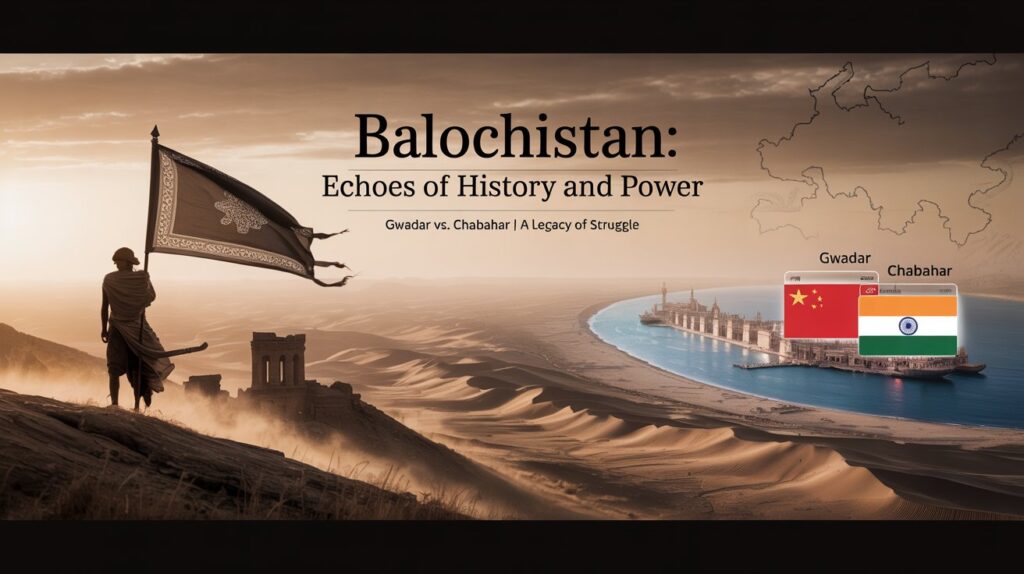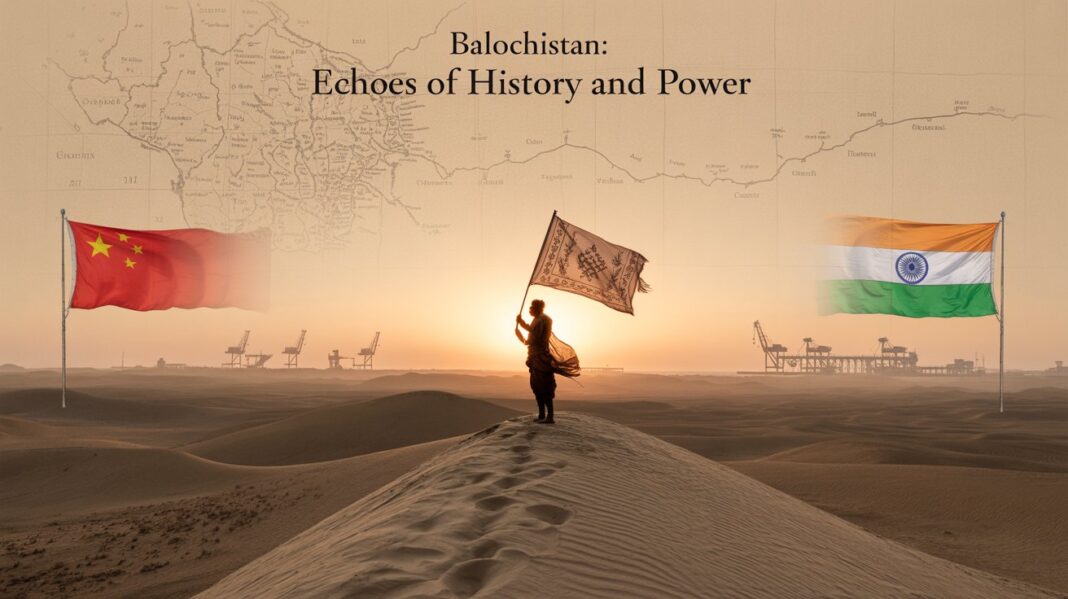Balochistan, a region steeped in history and strategic importance, lies at the heart of South Asia’s geopolitical landscape. Straddling the borders of Pakistan, Iran, and Afghanistan, it has been a focal point of cultural, political, and economic struggles for centuries. From ancient empires to modern-day rivalries involving India, Pakistan, and China, Balochistan remains a critical player in regional dynamics. This article explores its historical roots, ongoing independence movements, and the strategic contest over ports like Gwadar and Chabahar.
A Glimpse into Balochistan’s Historical Legacy
Balochistan’s history is a tapestry of conquests and resistance. Once part of powerful Hindu kingdoms and later the Mughal Empire, the region saw significant turmoil during the reigns of emperors like Babur and Humayun. Notably, Humayun’s defeat by Sher Shah Suri in the 16th century marked a turning point in Mughal dominance. Later, Hindu dynasties like the Marathas, led by Shivaji, challenged Mughal rule, setting a precedent for resistance against centralized authority.
Under British colonial rule, Balochistan retained a degree of autonomy but was never fully integrated into British India. Following the 1947 partition, it became part of Pakistan, sparking decades of unrest as the Baloch people sought greater autonomy or independence.
Balochistan’s Struggle for Autonomy
The Baloch have repeatedly clashed with the Pakistani state, driven by demands for cultural recognition, economic rights, and political autonomy. These rebellions, often rooted in grievances over resource exploitation and marginalization, continue to challenge Pakistan’s control. The Balochistan Liberation Movement and other insurgent groups have kept the region volatile, with some alleging covert Indian support as a counter to Pakistan’s influence.
Gwadar vs. Chabahar: The Geopolitical Chessboard
Balochistan’s strategic location makes it a linchpin in global trade and geopolitics. The Gwadar Port, developed with Chinese investment under the Belt and Road Initiative (BRI), is a cornerstone of China’s ambitions to dominate global trade routes. Located on the Arabian Sea, Gwadar offers China access to the Middle East and Africa, bypassing traditional maritime chokepoints.
In response, India has invested heavily in Iran’s Chabahar Port, just 700 kilometers from Gwadar. Chabahar serves as India’s gateway to Central Asia, Russia, and beyond, bypassing Pakistan. This port rivalry underscores the broader India-Pakistan-China competition, with Chabahar offering India a strategic counterbalance to China’s growing presence in the region.
China’s Role and the Belt and Road Initiative

China’s involvement in Gwadar has transformed Balochistan into a geopolitical hotspot. The BRI aims to create a vast trade and infrastructure network, but it has also raised concerns about Chinese economic dominance and military presence. Reports suggest China has secured significant control over Gwadar, prompting fears of regional imbalances. Meanwhile, India’s Chabahar project, backed by exemptions from U.S. sanctions on Iran, strengthens its position in Central Asian trade routes.
India-Pakistan Relations and Balochistan
Balochistan remains a contentious issue in India-Pakistan relations. While Pakistan accuses India of fueling Baloch separatism, India denies these claims, focusing instead on its strategic interests through Chabahar. The region’s unrest complicates Pakistan’s internal stability, while India leverages its diplomatic and economic ties with Iran and Afghanistan to encircle Pakistan strategically.
The Future of Balochistan
Balochistan’s future hinges on its ability to navigate these complex dynamics. Will it remain a battleground for proxy conflicts, or can it achieve stability and economic progress? The region’s vast natural resources and strategic ports make it a prize for global powers, but the Baloch people’s aspirations for self-determination cannot be ignored.
Conclusion
Balochistan’s history and geopolitical significance highlight its role as a crossroads of empires and modern rivalries. From Hindu and Mughal legacies to the current India-Pakistan-China contest, the region continues to shape global politics. As Gwadar and Chabahar ports vie for dominance, Balochistan’s story is far from over. Stay informed about these developments and their impact on South Asia’s future.




